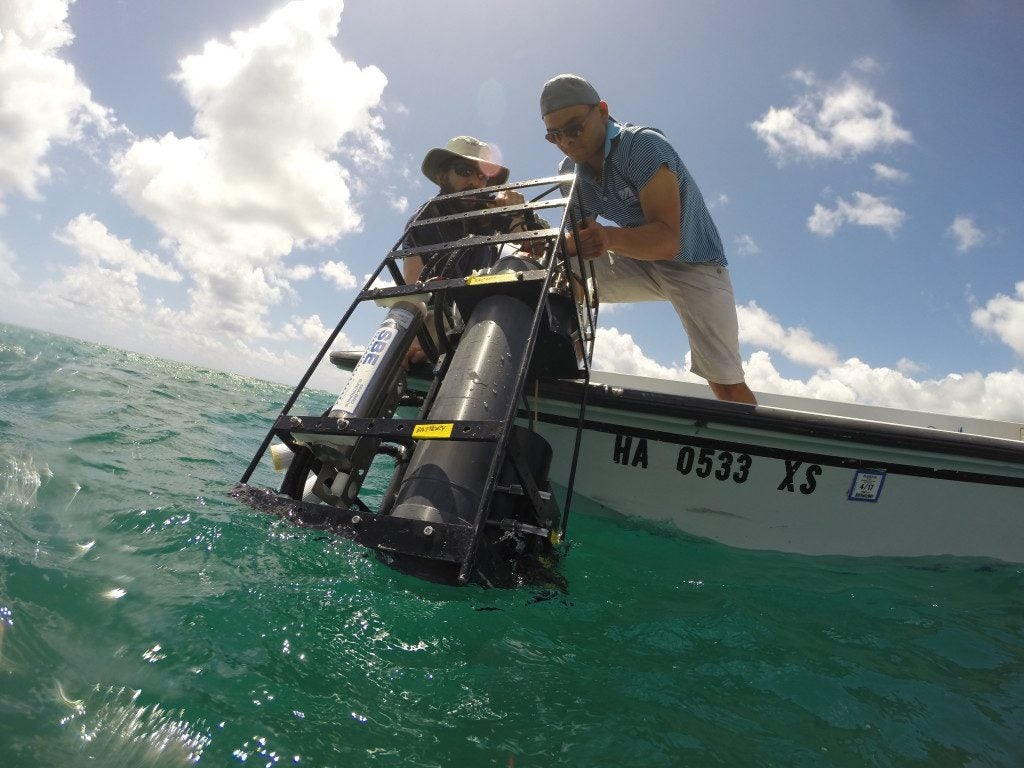By Carol Rasumussen
In an Airborne Campaign, Why Boats?

As boat operations begin on Tuesday, June 7, Brandon Russell (University of Connecticut) drops the inherent optical properties “cage” into the water. Instruments in the cage measure how light is absorbed and scattered in the water. The measurements will help scientists “see through” the water and isolate the light reflected from the bottom. Credit: HIMB/Daniel Schar
What makes the Coral Reef Airborne Laboratory (CORAL) a game-changer is its airborne instrument. NASA’s Portable Remote Imaging Spectrometer (PRISM) will fly at 28,000 feet, viewing entire coral reef ecosystems on a scale that no boat-based campaign can match. Yet CORAL is using three research boats and scuba divers in the same areas that PRISM will be flying above. With a state-of-the-art remote sensing instrument in action, what’s the point of getting wet?
“We have to go in the water to make sure the airborne data are accurate,” said CORAL principal investigator Eric Hochberg, of the Bermuda Institute of Ocean Sciences. The boat measurements are like independent witnesses in a trial. If they agree with the PRISM data, it confirms that the PRISM measurements are valid—which is why this step is called validation.
As CORAL’s operational readiness test—its final dress rehearsal—continues on Oahu, the first boat team has been testing optical instruments in the waters of Kaneohe Bay. Researchers Brandon Russell, from the University of Connecticut, and Rodrigo Garcia, from the University of Massachusetts, Boston, are measuring light at the ocean surface and optical properties of the water around the 17-square-mile bay. A second boat team arrived Thursday to start assembling and testing equipment to measure reef metabolism, specifically photosynthesis and calcification. A third boat team arriving Saturday will measure the composition (coral, algae, and sand) of the seafloor, scientifically known as benthic cover. The third team will also measure optical properties (reflectance) of the seafloor.
Hochberg noted that validation is especially important in CORAL because its science is ultimately based on the large-scale airborne measurements, and it will be collecting data in many locations where there are no supporting data available. “The airplane will be flying over remote regions where we can’t go diving and we don’t know what’s there,” he said. “Every pixel in the PRISM data will have to be identified. Some will have more coral or less coral, some will be deeper, some will be shallower. We need validation data to give us confidence in all these different conditions.”


